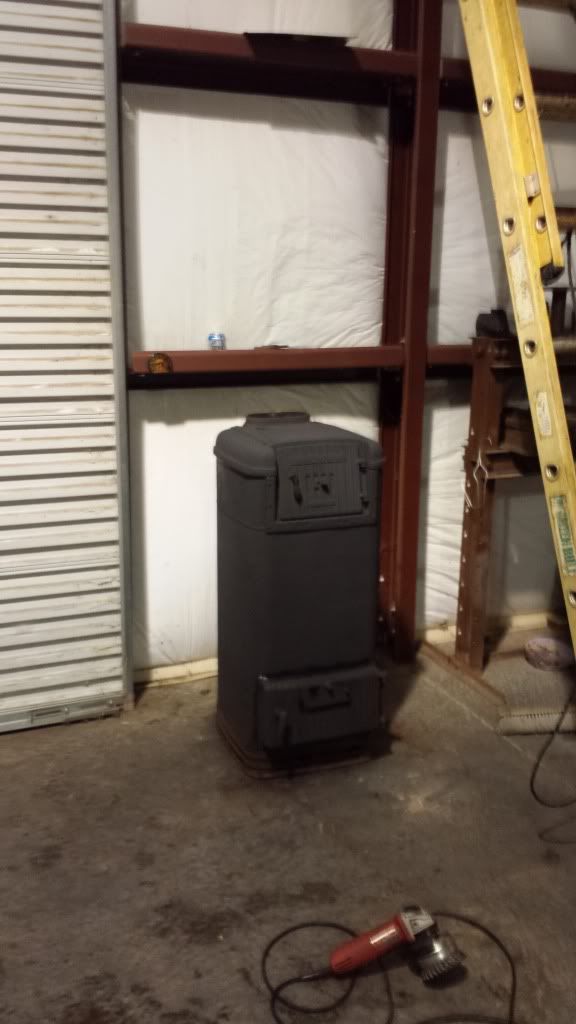sledgehammer02
New member
- Joined
- Jun 28, 2012
- Messages
- 445
I use my out side wood stove, witch heats the water base boards in the house and does a blower in the garage. And the coldest month burns a cord of wood
Ive never cared for overhead radiant heat. We have it in one shop and I hate working in there. Especially if you have something like a combine that you are working on the top of, it will sweat you out of there yet the shop itself is still cold. If the building is insulated enough, any forced air heater will work and keep everything warm.
floor heat is the way to fly. its fairly cheap to install if pouring a slab and is very efficient compared to forced air heat or overhead radiant. it may take a long while to heat the shop up, but it uses the slab as a heat battery to keep everything else warm..
We are looking at installing radiant tube heat in a 40x60 shop with 20 foot ceilings. A cold winter day/night here in NJ we will see 10-20degrees.
The shop is not the best of insulated but it has spray foam insulation inside and out. The door up and down is not an issue. I think if it opens a couple times a day it would be a lot. From what every one is saying the recovery time is there because all the objects are warm as opposed to just the air. Which I completely agree with.
My next question is I'm trying to size a tube or two to what will work best.
With the calculators provided online it seems to tell that ill need 450,000 btu to get it up to temp then 120,000 - 150,000 to keep it at about a 10 degree heat drop per hour with ambient air temp of about 25 degree (this is saw when I was at the shop)
I was thinking a 200k would be plenty to keep the shop warm. But I don't want to go to small or too big.
What's every body using for size of heater? Size of shop and avg winter temps? Insulation (good, avg, poor)
We are looking at installing radiant tube heat in a 40x60 shop with 20 foot ceilings. A cold winter day/night here in NJ we will see 10-20degrees.
The shop is not the best of insulated but it has spray foam insulation inside and out. The door up and down is not an issue. I think if it opens a couple times a day it would be a lot. From what every one is saying the recovery time is there because all the objects are warm as opposed to just the air. Which I completely agree with.
My next question is I'm trying to size a tube or two to what will work best.
With the calculators provided online it seems to tell that ill need 450,000 btu to get it up to temp then 120,000 - 150,000 to keep it at about a 10 degree heat drop per hour with ambient air temp of about 25 degree (this is saw when I was at the shop)
I was thinking a 200k would be plenty to keep the shop warm. But I don't want to go to small or too big.
What's every body using for size of heater? Size of shop and avg winter temps? Insulation (good, avg, poor)
Morning bump
Sent from my Toilet Explorer


I use clean burning coal for heat.....


My building is well insulated and is right under 4000sqft, I didnt build it so floor heat wasnt an option. When I get a good fire going, and chuck it full of coal it will burn for about 4 hrs untouched and put off serious heat. It will heat about half the building to 60-65* with outside temps 15-20*. Just be aware, my stove jacket stays about 700*........don't touch it. A shop the size of the OP's, my stove would make you sweat, pick one up on CL and go on.
Also watching this. I need something for our 45 x 45 x 20 shop. Currently using a 170,000 BTU ready heater fired with off road diesel. It heats up good, but costly and stinky. Thinking about setting a propane tank outside and getting about 40' of radiant tube heat. Any brands to avoid? Any to recommend?
Insulated shop with one 20' x 10' insulated overhead door. R13 between perlin and tin.
